Showing Spotlights 1361 - 1368 of 2851 in category All (newest first):
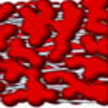 With the semiconductor industry still on the path of Moore's law, researchers have already been toying with single-molecule electronics and molecular memory to push miniaturization of electronics to its limit. However, with electrical gadgets and devices getting increasingly smaller and functionally more powerful, the current density flowing through the copper and gold conductors in these devices has been exponentially increasing. Therefore, electrical conductors with higher current density tolerance are in huge demand and recent research has addressed this issue.
With the semiconductor industry still on the path of Moore's law, researchers have already been toying with single-molecule electronics and molecular memory to push miniaturization of electronics to its limit. However, with electrical gadgets and devices getting increasingly smaller and functionally more powerful, the current density flowing through the copper and gold conductors in these devices has been exponentially increasing. Therefore, electrical conductors with higher current density tolerance are in huge demand and recent research has addressed this issue.
Aug 6th, 2013
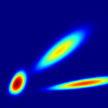 In addition to manipulating the charge or spin of electrons, another way to control electric current is by using the 'valley' degree of freedom of electrons. This novel concept is based on utilizing the wave quantum number of an electron in a crystalline material. Researchers now report the first demonstration of the generation, transport and detection of valley-polarized electrons in bulk diamond - a result which opens up new opportunities for quantum control in electronic devices.
In addition to manipulating the charge or spin of electrons, another way to control electric current is by using the 'valley' degree of freedom of electrons. This novel concept is based on utilizing the wave quantum number of an electron in a crystalline material. Researchers now report the first demonstration of the generation, transport and detection of valley-polarized electrons in bulk diamond - a result which opens up new opportunities for quantum control in electronic devices.
Aug 5th, 2013
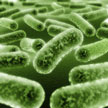 Microbial fuel cells are a prime example of environmental biotechnology that turns the treatment of organic wastes into a source of electricity. In microbial fuel cells, the naturally occurring decomposing pathways of electrogenic bacteria are used to both clean water and produce electricity by oxidizing biological compounds from wastewater and other liquid wastes, even urine. Researchers have now demonstrated a sustainable and practical design for a micro-sized microbial fuel cell.
Microbial fuel cells are a prime example of environmental biotechnology that turns the treatment of organic wastes into a source of electricity. In microbial fuel cells, the naturally occurring decomposing pathways of electrogenic bacteria are used to both clean water and produce electricity by oxidizing biological compounds from wastewater and other liquid wastes, even urine. Researchers have now demonstrated a sustainable and practical design for a micro-sized microbial fuel cell.
Aug 1st, 2013
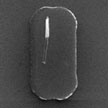 Nanowires are considered a major building block for future nanotechnology devices, with great potential for applications in transistors, solar cells, lasers, sensors, etc. Now, for the first time, nanotechnology researchers have utilized nanowires as a 'storage' device for biochemical species such as ATP. The team demonstrated that their nano-storage wire structure can be deposited onto virtually any substrate to build nanostorage devices for the real-time controlled release of biochemical molecules upon the application of electrical stimuli.
Nanowires are considered a major building block for future nanotechnology devices, with great potential for applications in transistors, solar cells, lasers, sensors, etc. Now, for the first time, nanotechnology researchers have utilized nanowires as a 'storage' device for biochemical species such as ATP. The team demonstrated that their nano-storage wire structure can be deposited onto virtually any substrate to build nanostorage devices for the real-time controlled release of biochemical molecules upon the application of electrical stimuli.
Jul 31st, 2013
 Assessing the potential effects of nanomaterials on environment and human health consists of two distinct aspects: To what degree are nanoparticles released from products; and how and to what degree do the released nanoparticles affect organisms? The first aspect is centered on a field called exposure science, the study of human contact to agents - such as chemicals or microbes - found in their surroundings. A new study looks at the release of nanosilver from consumer products for children. The core finding is that the release of silver from nanosilver-containing products depends heavily on how the product is used. The total amount of silver released by a consumer product is likely to be very low and, for the products tested, happened only in the beginning of product life.
Assessing the potential effects of nanomaterials on environment and human health consists of two distinct aspects: To what degree are nanoparticles released from products; and how and to what degree do the released nanoparticles affect organisms? The first aspect is centered on a field called exposure science, the study of human contact to agents - such as chemicals or microbes - found in their surroundings. A new study looks at the release of nanosilver from consumer products for children. The core finding is that the release of silver from nanosilver-containing products depends heavily on how the product is used. The total amount of silver released by a consumer product is likely to be very low and, for the products tested, happened only in the beginning of product life.
Jul 30th, 2013
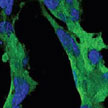 Researchers report on a novel targeted drug-delivery vehicle for cancer therapy, which can selectively target the tumor niche while delivering an array of therapeutic agents. This targeting platform is based on unique vesicles ('nanoghosts') that are produced, for the first time, from intact cell membranes of stem cells with inherent homing abilities, and which may be loaded with different therapeutics. The team showed that such vesicles, encompassing the cell surface molecules and preserving the targeting mechanism of the cells from which they were made, can outperform conventional delivery systems based on liposomes or nanoparticles.
Researchers report on a novel targeted drug-delivery vehicle for cancer therapy, which can selectively target the tumor niche while delivering an array of therapeutic agents. This targeting platform is based on unique vesicles ('nanoghosts') that are produced, for the first time, from intact cell membranes of stem cells with inherent homing abilities, and which may be loaded with different therapeutics. The team showed that such vesicles, encompassing the cell surface molecules and preserving the targeting mechanism of the cells from which they were made, can outperform conventional delivery systems based on liposomes or nanoparticles.
Jul 26th, 2013
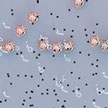 Surface Enhanced Raman Spectroscopy (SERS) is a powerful analytical method that can detect trace amounts of substances, such as narcotics, toxins, and explosives. The detection is based on the fact that molecules of different substances interacting with light from a laser will scatter the light differently, providing a unique spectrum that can be used to identify the substance, much like a fingerprint. Researchers have used a microfluidic device to orchestrate the interactions between silver nanoparticles and methamphetamine molecules in saliva. The microfluidic device allows for the controlled introduction of the sample and the nanoparticles, and the subsequent aggregation of the nanoparticles into hot-spot rich clusters that allow us to detect minute amounts of the drug.
Surface Enhanced Raman Spectroscopy (SERS) is a powerful analytical method that can detect trace amounts of substances, such as narcotics, toxins, and explosives. The detection is based on the fact that molecules of different substances interacting with light from a laser will scatter the light differently, providing a unique spectrum that can be used to identify the substance, much like a fingerprint. Researchers have used a microfluidic device to orchestrate the interactions between silver nanoparticles and methamphetamine molecules in saliva. The microfluidic device allows for the controlled introduction of the sample and the nanoparticles, and the subsequent aggregation of the nanoparticles into hot-spot rich clusters that allow us to detect minute amounts of the drug.
Jul 25th, 2013
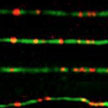 Understanding the purpose of the molecular modifiers that annotate DNA strands - called epigenetic markers - and how they change over time will be crucial in understanding biological processes ranging from embryo development to aging and disease. But just how the markers work, and what different markers mean, is painstaking work that still has left a long way to go. Advancing this research field, scientists have now reported the first direct visualization of individual epigenetic modifications in the genome. This is a technical and conceptual breakthrough as it allows not only to quantify the amount of modified bases but also to pin point and map their position in the genome.
Understanding the purpose of the molecular modifiers that annotate DNA strands - called epigenetic markers - and how they change over time will be crucial in understanding biological processes ranging from embryo development to aging and disease. But just how the markers work, and what different markers mean, is painstaking work that still has left a long way to go. Advancing this research field, scientists have now reported the first direct visualization of individual epigenetic modifications in the genome. This is a technical and conceptual breakthrough as it allows not only to quantify the amount of modified bases but also to pin point and map their position in the genome.
Jul 24th, 2013
 With the semiconductor industry still on the path of Moore's law, researchers have already been toying with single-molecule electronics and molecular memory to push miniaturization of electronics to its limit. However, with electrical gadgets and devices getting increasingly smaller and functionally more powerful, the current density flowing through the copper and gold conductors in these devices has been exponentially increasing. Therefore, electrical conductors with higher current density tolerance are in huge demand and recent research has addressed this issue.
With the semiconductor industry still on the path of Moore's law, researchers have already been toying with single-molecule electronics and molecular memory to push miniaturization of electronics to its limit. However, with electrical gadgets and devices getting increasingly smaller and functionally more powerful, the current density flowing through the copper and gold conductors in these devices has been exponentially increasing. Therefore, electrical conductors with higher current density tolerance are in huge demand and recent research has addressed this issue.
 Subscribe to our Nanotechnology Spotlight feed
Subscribe to our Nanotechnology Spotlight feed





